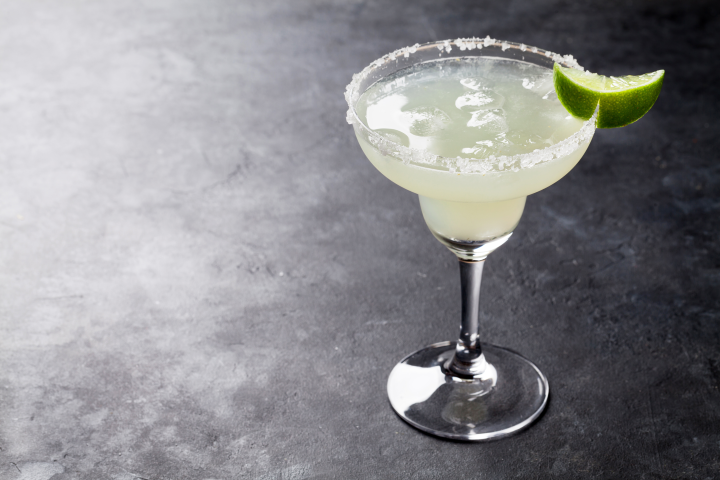With roots that stretch back to the 1930s, the margarita represents one of the greatest cocktails ever created. Its bright and simplistic mix of tequila, lime, and orange pleased crowds long before it spiked Jimmy Buffett’s music career. Of course, like most cocktails, it isn’t immune to the substandard, overly-sweet, pre-mixed offerings found at establishments all over the world. But by adhering to a few fundamentals, you can perfect the agave classic at home and upgrade your mixology skills without breaking the bank.
Margaritas 101
What follows are five basic concepts that produce great margaritas. But these simple standards can be applied to any cocktail regardless of spirit.
Always Use Fresh Lime Juice
There’s one universal truth of all cocktails: pre-bottled citrus juice ruins them. If you want your margaritas to taste like those green, prebatched restaurant versions, then by all means, buy a bottle of Rose’s lime and have at it. But if you want to bring out the best in your tequila, pick up some limes and squeeze them yourself.
For parties or large batches, feel free to juice several limes ahead of time and refrigerate. Note, however, that the pH of lime juice changes as it rests. This article goes into the science and concludes that lime juice tastes the best when it’s about four hours old. While interesting, there’s no reason to get too carried away with perfecting the squeeze. Just keep in mind that old lime juice loses its zip and yields a flat margarita.
Choose the Right Tequila
With literally over 1,000 different brands on the market, picking the best tequila presents a daunting challenge. Here’s a quick cheat sheet to help:
- Generally, blanco tequilas play the nicest. Their mellow, fruity and peppery profile doesn’t get in the way of the other ingredients like aged and unfiltered tequilas sometimes do.
- 100% blue agave tequilas aren’t a marketing ploy, they’re a mandate. Mixed (mixto) or blended versions just don’t cut it.
- Avoid the bottom shelf. For the most part, you’ll end up with a decent option by sticking to the 100% blue agave rule above, but you always get what you pay for.
- Avoid the top shelf. Top-shelf tequilas are phenomenal but best reserved for sipping. And even though quality brands like Patron and Don Julio (though not necessarily considered top-shelf except in restaurants) make great margaritas, they’re almost too smooth. This cocktail likes a little funk and fight!
- Experiment! Read up on some brands and try them out. If there’s an establishment in your city that carries a large selection, go have a tasting. Some places offer flights of tequilas, which is a great way to sample varieties without commitment.
Don’t Skip the Orange Liqueur

You might see some top-shelf margaritas boast that they use only great tequila, lime, and a little sweetener. But orange liqueur warms up the cocktail with a bit of spice and ties all the ingredients together. And like choosing a tequila, avoid that super-cheap, bottom-shelf bottle of triple sec.
Personally, I prefer Clément Créole Shrubb—a rhum-based spirit that slaps the margarita with a noticeable sizzle without adding too much sweetness. And you can’t go wrong with top-shelf standbys like Grand Marnier and Cointreau (I prefer the latter when paying up). For a comprehensive overview of orange liqueurs, check out this field guide from Serious Eats.
Keep the Sweetness in Check
Likely a result of covering up cheap tequilas and large-batch mixers, overly-sweet margaritas tend to flow out of restaurants and bars alike but share no resemblance to the original’s greatness. At home, you have complete control over the balance of sweetness, and you’re encouraged to keep it in check by favoring a slightly tart drink. A good rule of thumb is to always include more citrus juice than sugar.
With balance in order, the next step is choosing the right sweetener. Simple syrup will do the trick, but agave nectar ranks as the top choice for obvious reasons (tequila is fermented agave juice). If you make the switch from simple syrup to agave syrup, be sure to cut the amount in half, since agave is much sweeter (and much more robust!).
Don’t Forget Dilution
Margaritas are great for parties and large gatherings because you can simply multiply the ratio of ingredients by x and throw them in a dispenser for all to enjoy (not every cocktail batches well). But one crucial step most forget in this process is proper dilution.
When you shake margaritas in a mixer tin the ice slightly dilutes the drink, which makes it both smoother and more palatable. With large, premade batches, no shaking with ice occurs, which means no dilution occurs. To compensate, either add water (I typically add an equal amount of water to agave syrup and taste from there) or ice the batch down several hours before serving. There’s no magic formula for how long to ice or how much water to add, but here’s some science on it. The most important lessons: don’t forget to shake the margarita with purpose, don’t forget to dilute margaritas when you don’t shake them, and use your taste buds.
Bonnema’s Margarita Recipe:
- 1.5 oz Olmeca Altos Plata Tequila
- .75 oz fresh lime juice
- .5 oz Clément Créole Shrubb
- .25 oz Agave Nectar (dark)
Vigorously shake all ingredients with ice and strain over ice. Salted rim optional. Blender not recommended.


